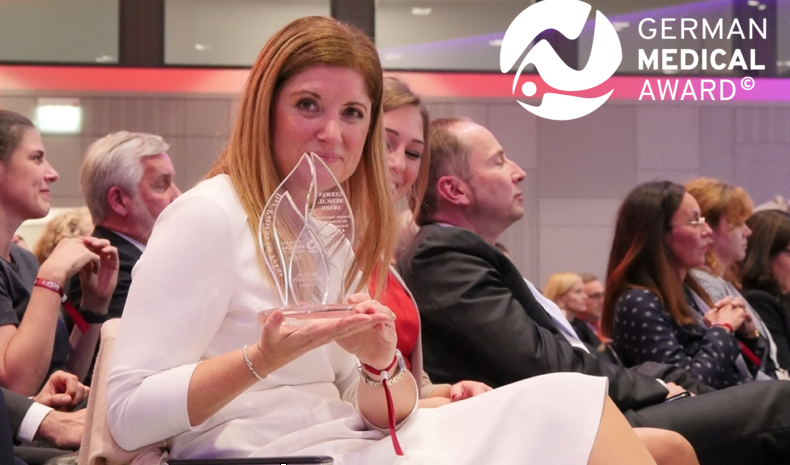In the category “Medical Innovation Award Practice & Clinic Diagnostics” Priv.-Doz. Dr. Daniela Hartmann, Ph.D. from the Clinic and Polyclinic for Dermatology and Allergology at Ludwig-Maximilians-Universität and the Munich Clinic won this year’s “German Medical Award”. By using artificial intelligence (AI) and confocal laser microscopy, users — even beginners — get faster and better results, as tumors are easily visible and more recognizable through AI. Three partners have joined forces under the project name “SKIN-ID,” funded by the Free State of Bavaria, to conduct research in this field: the Ludwig Maximilian University of Munich, the M3i agency and the equipment manufacturer VivaScope.
This GmbH has been on the market for over eighteen years. The Munich-based innovation company is a specialist in the development and worldwide distribution of confocal laser scanning microscopes in various areas of the medical and cosmetics industries.
“Especially in the area of basal cell carcionoma and squamous cell carcionoma, we can detect tumors very well, even those that are not easily visible, and usually remove them completely.”
- Dr. Daniela Hartmann, Senior Physician at the Clinic and Polyclinic for Dermatology and Allergology at the LMU Munich
Especially the complete removal of a tumor is important, because otherwise the patient has to come several times, always new interventions are necessary. Sometimes, for example in the facial area, the wound must remain open for several days until a final result is obtained and the patient can be operated on further. This means stress for the patient but also for the healthcare system.
Advantage of the use of ex-vivo confocal laser scanning microscopy
The results are available ultra-fast. During surgery, several steps and examinations that normally take days can be performed simultaneously in one moment.
Fresh tissue is stained with fluorescent dye. The physician receives information about what kind of tumor it is, whether everything has been excised and gets faster and more reliable information about further treatment. The physician thus learns directly whether further cutting is necessary or whether the wound can be closed. For the patient, this may save several interventions and multiple hospitalization days.
Dr. Hartmann explains: “How do users get the results? Through the microscope and by using experts to evaluate the images. What is new in the SKIN-ID project is that we also use artificial intelligence. This simplifies the work of dermatologists and dermahistopathologists. Artificial Intelligence leads to an improvement of the method and by AI and experts working together, the work becomes faster with better results at the same time.”
SKIN-ID is thus not only pursuing the goal of faster and safer results in the long term, but the use of artificial intelligence is also intended, above all, to relieve the burden on the pathologist. The pathologist can concentrate on difficult cases while the artificial intelligence is used to evaluate and assess them.
VivaScope technology is already in use at hospitals such as Goethe University in Frankfurt, the Helios Clinic in Erfurt, Leipzig University Hospital and Augsburg University Hospital.

















